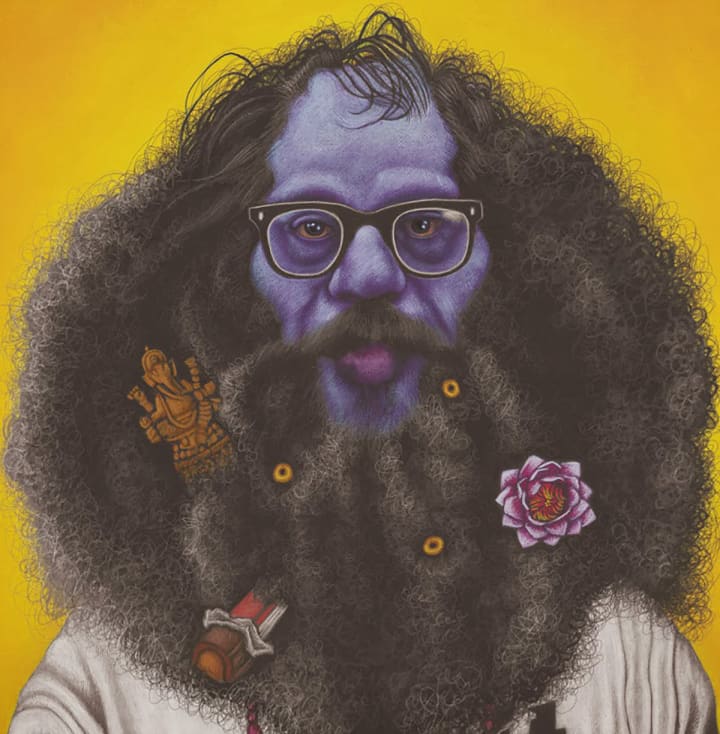Who Was Allen Ginsberg?
Allen Ginsberg was able to relate his feelings on being a homosexual and a marijuana smoker, together in his poetry.

As a poet, Allen Ginsberg was able to relate his feelings on being homosexual and a marijuana smoker in his poetry, achieving the status of an almost mystic figure. He had an intense spiritual life and tried to expedite whatever came to his head, and to explore what his mind wanted to pursue.
Ginsberg's writing habit forced him to record all of his activities and dreams, whether important or not. Journals is a consolation to this need of Ginsberg's. The book covers the decade from 1952 through 1962, when Ginsberg wrote Howl, Empty Skies and Kaddish (dedicated to his deceased mother).
Ginsberg traveled through Mexico and covered the living conditions and beliefs of the Mexicans. He chronicles his adventure in his journal. In Berkeley, California, in 1955, Ginsberg finds his old companion Neal Cassidy with a wife and kids. Ginsberg's feelings change with Neal’s lack of attention.
He then meets Peter Orlovsky, who is to become his lifelong love companion. During this transgression, Howl was published. This epic poem caused heavy repercussions and in retrospect, was more influential than almost any other poetry in American literature to that date.
The book skips for three years and goes to January 1959, when Ginsberg returns to see the old terrain once again in New York City. At this point, he writes Kaddish in his 2nd Street Apartment; the fourth part had been created in Paris in 1958, entitled O, Mother.
In his poem, Subliminal, written in October 1960, Ginsberg becomes fed up with the US Government for taking the people's money and lying about how they use it. He hates the control of the people by the mass media, is mad at the journalists who attack him and Kerouac and Corso, and resents the banning of Burrough's Naked Lunch in America. He denounces the CIA and opens his prophecy of military secrets. From there he writes about heroin and his hatred of the presidency and other officials. He continues his hatred for the government with Politics on Opium:
Must I write Letters to the NY Times & Petition the furryMayor in Vain? I Gotta go fight City Hall.Protect my private feet delight on the Sidewalk?I reasonable reply CourteouslyBut fear being kicked in the balls or charged with possession of two ears.
During this period, Ginsberg wrote about morphine and psilocybin. His roommate, Herbert Hunche, and Hunche's friends were allowed to stash their drugs in the apartment to support their habits and Ginsberg totally ignored it. One day the police came in and arrested all of them, including Ginsberg, and they were all sent to a mental hospital.

The year is 1960 and this is where many parts of Ginsberg's hatred for the government prevails to new levels. After this, Ginsberg resolves his goals and travels around the world in 1960-62, becoming an international poet. He covers the terrain Kerouac and Corso have covered earlier. Here Ginsberg writes of American and international politics as if he were a spokesman and responds to the US-supported invasion of Cuba, which he writes of in Fall of America.
After two months in France, Ginsberg and Orlovsky leave to join Burroughs in Tangier. Other friends, Kerouac, Tennessee Williams and Timothy Leary are also there or pass through. Ginsberg extends his journey and goes through Greece 'to bake my head in the classical sun.' From there he goes to Israel and then to Africa.
Journals ends with his dream of being in Paterson, New Jersey and the thought of buying some junk. Instead, he decides to be on a trip of his own. Ginsberg's journey was interrupted with health issues starting in the 1970s that would plague him for the rest of his life. But he never stopped working, he never stopped writing. He passed at the age of 70, in 1997. His body of work is his legacy, his legacy is enlightening.
About the Creator
Wendy Weedler
Lives in Washington D.C. Has been part of the legalization movement for decades.






Comments
There are no comments for this story
Be the first to respond and start the conversation.